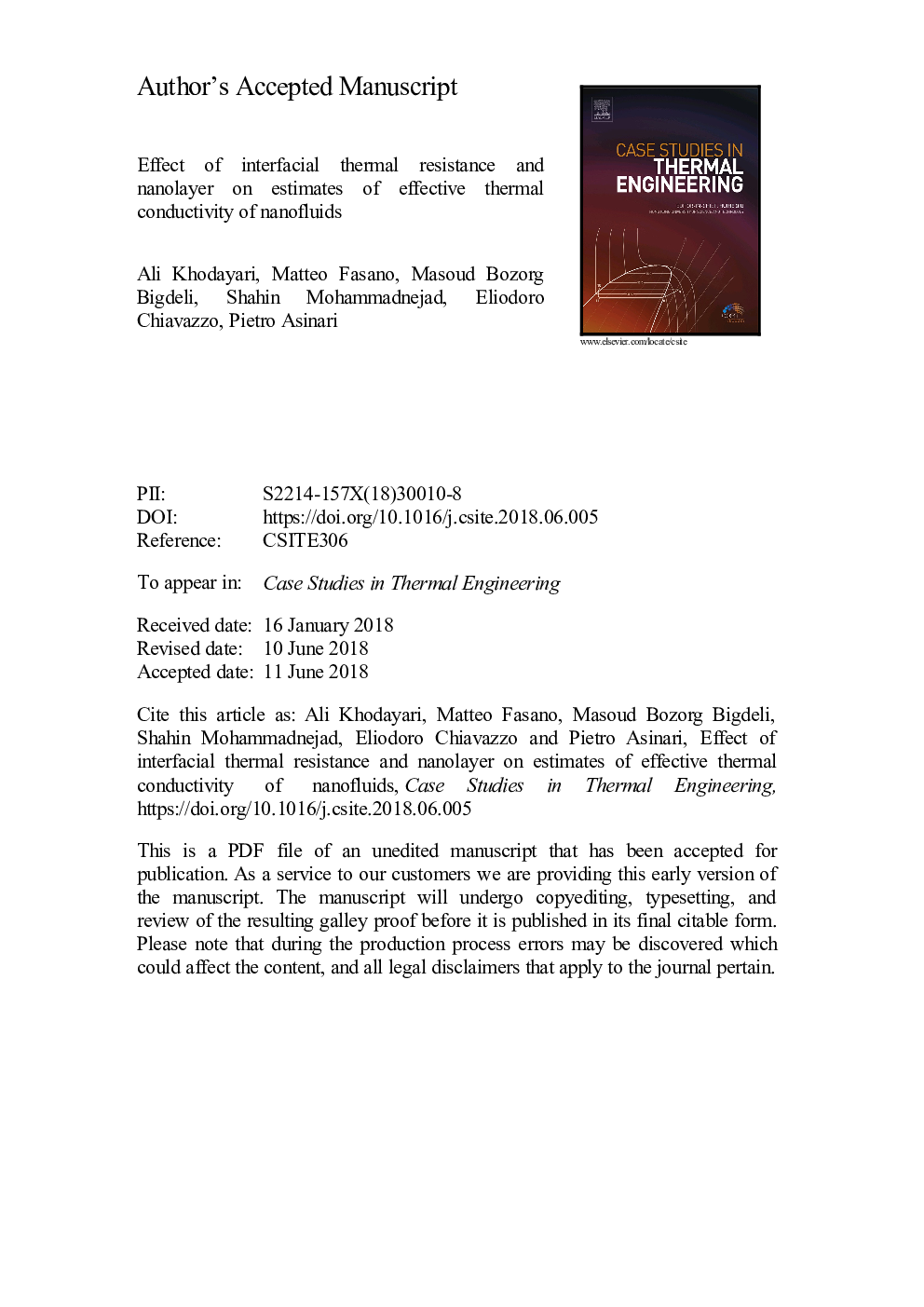| Article ID | Journal | Published Year | Pages | File Type |
|---|---|---|---|---|
| 7153352 | Case Studies in Thermal Engineering | 2018 | 22 Pages |
Abstract
Colloidal suspensions of nanoparticles (nanofluids) are materials of interest for thermal engineering, because their heat transfer properties are typically enhanced as compared to the base fluid one. Effective medium theory provides popular models for estimating the overall thermal conductivity of nanofluids based on their composition. In this article, the accuracy of models based on the Bruggeman approximation is assessed. The sensitivity of these models to nanoscale interfacial phenomena, such as interfacial thermal resistance (Kapitza resistance) and fluid ordering around nanoparticles (nanolayer), is considered for a case study consisting of alumina nanoparticles suspended in water. While no significant differences are noticed for various thermal conductivity profiles in the nanolayer, a good agreement with experiments is observed with Kapitza resistance â10â9âm2K/W and sub-nanometer nanolayer thickness. These results confirm the classical nature of thermal conduction in nanofluids and highlight that future studies should rather focus on a better quantification of Kapitza resistance at nanoparticle-fluid interfaces, in order to allow bottom up estimates of their effective thermal conductivity.
Related Topics
Physical Sciences and Engineering
Engineering
Mechanical Engineering
Authors
Ali Khodayari, Matteo Fasano, Masoud Bozorg Bigdeli, Shahin Mohammadnejad, Eliodoro Chiavazzo, Pietro Asinari,
